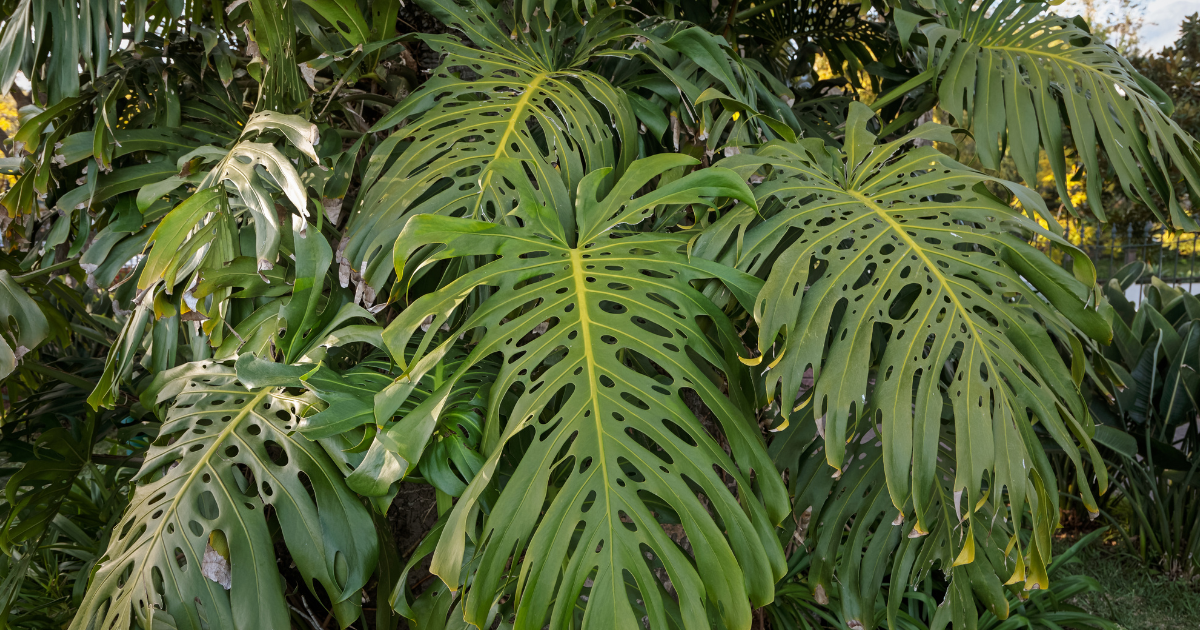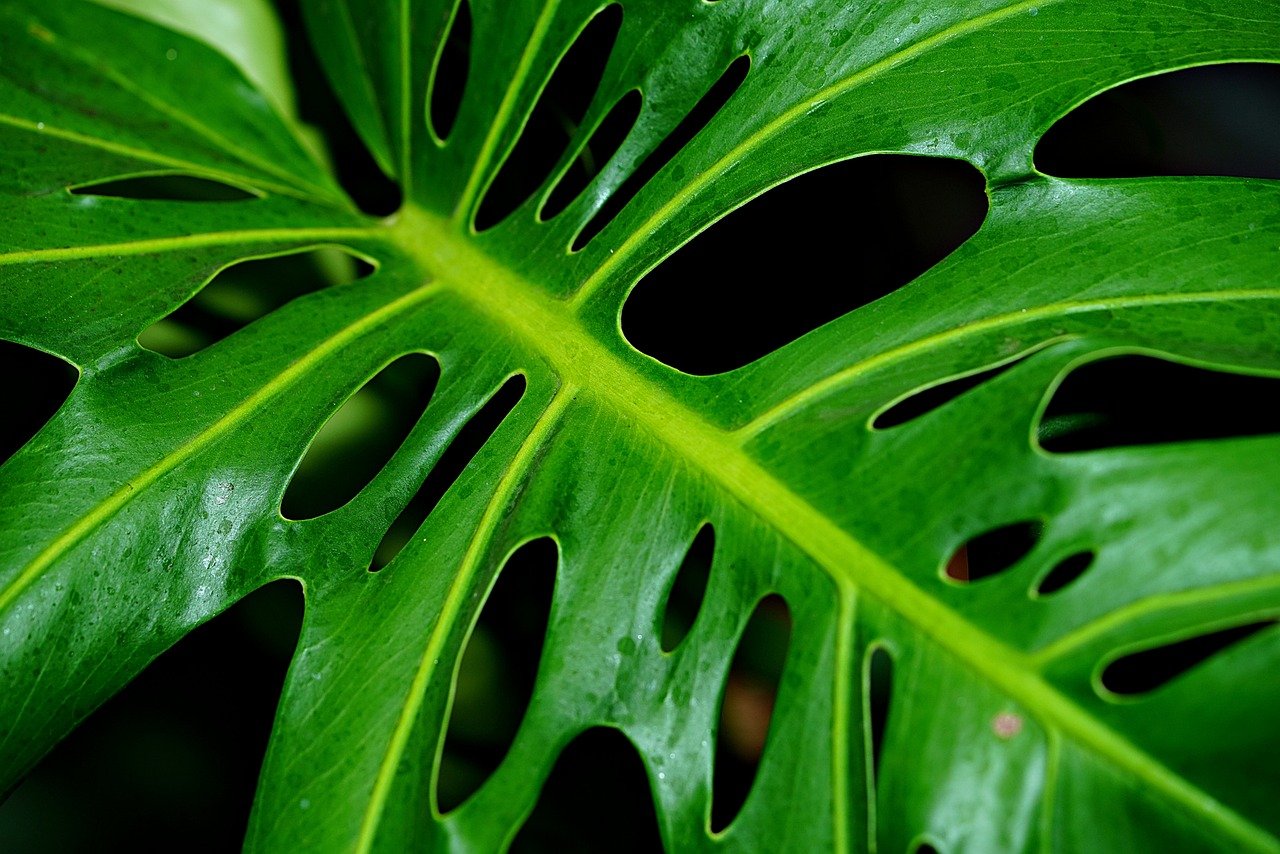Spot the Difference: Split Leaf Philodendron vs Monstera Deliciosa
In the world of indoor plants, it's easy to mix up the Split Leaf Philodendron and the Monstera Deliciosa because they look so similar. Despite their eye-catching leaves, these two plants have distinct traits that set them apart. Let's explore the specific characteristics that differentiate these two botanical wonders.
Understanding Split Leaf Philodendron:

The Split Leaf Philodendron, scientifically known as Philodendron Bipinnatifidum, is a native of the tropical regions of Central and South America. Its leaves, with dramatic splits and holes, lend an exotic charm to any space. Here are some key traits of the Split Leaf Philodendron:
Leaf Structure
The Split Leaf Philodendron is prized for its large, glossy, split leaves that give it a unique and exotic appearance. The deeply lobed leaves are adorned with distinct splits and holes, creating an eye-catching and visually stunning display. This plant is a popular choice for adding a touch of tropical elegance to indoor spaces and is known for its low-maintenance care requirements.
Growth Habit
This plant has a natural inclination to grow in a way that resembles a vine, with elegant cascading or climbing tendencies when provided with appropriate support. On the other hand, it can also be encouraged to develop into a lush, dense shrub when cultivated in a pot.
Light and Water Needs
The Split Leaf Philodendron thrives in bright, indirect light. It is essential to place the plant in a location with ample natural light, but without direct sunlight, as this can scorch its leaves. When it comes to watering, it's important to keep the soil consistently moist but not waterlogged. You can achieve this by watering the plant regularly, allowing the top inch of soil to dry out between waterings. Overwatering can lead to root rot, so it's crucial to find the right balance.
Understanding Monstera Deliciosa:

The Monstera Deliciosa, also known as the Swiss Cheese Plant, hails from the same tropical regions as the Split Leaf Philodendron. Its large, glossy leaves and unique foliage pattern make it a favorite among plant enthusiasts. Here are some distinctive features of the Monstera Deliciosa:
Leaf Structure
The Monstera Deliciosa, also known as the Swiss cheese plant, features large, glossy leaves with distinctive irregular splits and holes, which resemble the appearance of Swiss cheese. Unlike its counterpart, the Split Leaf Philodendron, the splits on the Monstera Deliciosa are more random and less uniform, adding to its unique and striking visual appeal.
Growth Habit
In its native environment, Monstera Deliciosa naturally grows in a climbing habit, utilizing trees or structures for support. When grown indoors, it can be encouraged to climb by providing a support pole or trellis for it to latch onto and grow along.
Light and Water Needs
The Monstera Deliciosa, also known as the Swiss Cheese Plant, is a tropical plant that originates from the rainforests of Central and South America. It is a popular choice for indoor plant enthusiasts due to its unique fenestrated leaves and relatively low maintenance requirements.
In order to thrive, the Monstera Deliciosa requires bright, indirect light. This means placing it near a window where it can receive plenty of natural light, but not in direct sunlight which can scorch its leaves.
When it comes to watering, it's important to strike a balance. While the Monstera Deliciosa enjoys moderate watering, it's crucial to allow the top layer of soil to dry out between waterings. This helps prevent overwatering, which can lead to root rot and other issues. As a general rule of thumb, water the plant when the top inch of soil feels dry to the touch.
By providing the right amount of light and water, you can help your Monstera Deliciosa to thrive and grow into a beautiful, lush addition to your indoor space.
Spotting the Differences:
While these plants share some similarities, there are distinct features that set them apart:
- The Split Leaf Philodendron typically has more symmetrical and uniform splits in its leaves, whereas the splits in Monstera Deliciosa leaves tend to be more irregular.
In terms of growth habit, the Split Leaf Philodendron often grows more bushy and compact, while Monstera Deliciosa tends to climb and spread.
Additionally, the care requirements may slightly differ, with Monstera Deliciosa being more tolerant of occasional drought than the Split Leaf Philodendron.
Split Leaf Philodendron vs Monstera Deliciosa FAQs
1. Split Leaf Philodendron vs Monstera Deliciosa - What are the differences?
Both Split Leaf Philodendron and Monstera Deliciosa are tropical plants with large, perforated leaves, but they have distinct characteristics. Split Leaf Philodendron typically has more symmetrical and uniform splits in its leaves, whereas Monstera Deliciosa exhibits more irregular splits. Additionally, Split Leaf Philodendron tends to grow bushier and more compact, while Monstera Deliciosa has a climbing growth habit.
2. Split Leaf Philodendron vs Monstera Deliciosa - How to care for them?
Both plants thrive in bright, indirect light and require regular watering to keep the soil evenly moist. However, Split Leaf Philodendron may prefer slightly more consistent moisture compared to Monstera Deliciosa, which can tolerate brief periods of drought. It's essential to avoid overwatering and ensure adequate drainage for both plants.
3. Split Leaf Philodendron vs Monstera Deliciosa - How to propagate?
Yes, both Split Leaf Philodendron and Monstera Deliciosa can be propagated through stem cuttings. Select a healthy stem with several leaves and cut just below a node. Place the cutting in water or well-draining soil, keeping it warm and moist until roots develop. Propagation is a great way to expand your plant collection or share cuttings with friends.
4. Split Leaf Philodendron vs Monstera Deliciosa - What fertilizer to use?
While both plants benefit from regular fertilization during the growing season, they don't require any special fertilizers. A balanced, water-soluble fertilizer applied monthly during the growing season is sufficient to support healthy growth and foliage development. Be sure to follow the instructions on the fertilizer packaging to avoid overfertilization.
5. Split Leaf Philodendron vs Monstera Deliciosa - Are they toxic to pets?
Yes, both Split Leaf Philodendron and Monstera Deliciosa are considered toxic to pets if ingested. The sap of these plants contains compounds that can cause gastrointestinal irritation, including drooling, vomiting, and diarrhea, if consumed in large quantities. It's essential to keep these plants out of reach of pets and children and seek veterinary assistance if ingestion occurs.
Fern's Leafy Learnings
The Split Leaf Philodendron and Monstera Deliciosa may look alike at first glance, but their leaf structure and growth habits distinguish them.
Understanding these differences is crucial for providing appropriate care and maintenance to each plant.
Whether you opt for the Split Leaf Philodendron's orderly splits or the Monstera Deliciosa's whimsical foliage, both plants are sure to bring a touch of tropical elegance to your indoor oasis.
By identifying the unique traits of each plant, you can choose the perfect addition to your indoor jungle with confidence. Happy planting!
Deepen Your Roots with Flora
At Flora, we not only bring you a vibrant selection of locally sourced, rare, and delightful plants, but we also serve as your continuous guide in your plant parenting voyage, ensuring every leaf in your sanctuary thrives. With our Flora Pod™ technology and a nurturing community of over 250,000 plant lovers, we cultivate a space where every plant parent - novice or expert - can blossom.
We propagate with a commitment to sustainability, connection, and ceaseless growth, fostering a community where each member, and their plants, are cherished and nurtured.
Crave a lush, thriving green space? Adopt a plant from Flora today!
Flora Pod™ is featured on Shark Tank!

Shop Plants
Top 10 Most Popular Roses
Mar 22, 2022
How to Care for China Roses
Mar 11, 2022
How to Care for Chinese Money Plants
May 15, 2020
How to Grow and Care for A Bird of Paradise
Apr 26, 2020
Top 10 Plants To Grow In A Terrarium
May 31, 2022
How to Grow and Care for Lucky Bamboo
Mar 29, 2022
How to Grow and Care for Corn Plants
Mar 29, 2022
How to Care for Madagascar Dragon Trees
Mar 21, 2022













